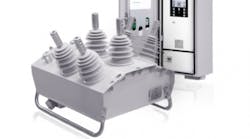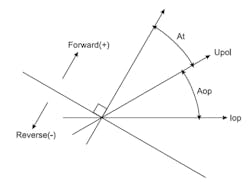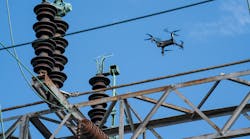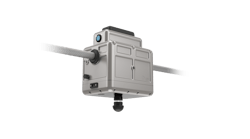Australia's NOJA Power has released Relay 1.9, an upgraded firmware platform for its OSM series Automatic Circuit Reclosers (ACR). Among other enhancements, the firmware now includes Negative Phase Sequence (NPS) protection and protection grading functionality during live line operation.
Previously, NOJA Power’s Relay firmware included Overcurrent (OC), Earth Fault (EF) and Sensitive Earth Fault (SEF) protection capabilities. The new firmware adds NPS protection to provide utilities with a full suite of protection capabilities for safeguarding three-phase electricity distribution systems.
The Relay 1.9 firmware employs the theory of symmetrical components to analyze the type, source and direction of faults and instructs the ACR to respond accordingly. Overcurrent magnitude and fault location can be determined from the positive phase sequence symmetrical component and earth faults and location from the zero phase sequence component. The provision of negative phase sequence in the new firmware now allows for the additional detection of broken conductors and their location even before power is lost from the system.
The parameters for NPS protection can be configured using NOJA Power’s Control and Management Software (CMS) and downloaded to an ACR or group of ACRs. Alternatively NPS protection can be configured via the ACR’s RC10 controller’s large backlit LCD display and keypad.
NPS protection is particularly useful, for example, for utilities striving to comply with the bushfire mitigation recommendations of the 2009 Victorian Bushfires Royal Commission. The commission identified that although ACRs operated satisfactorily when detecting earth faults caused by broken conductors touching the ground, the energy dissipated from the conductor on contact with dry vegetation could still be sufficient to cause ignition. Now, NPS protection will detect an isolated broken conductor, allowing the ACR to begin operation to lock out before the cable touches the ground - minimizing the energy dissipated to vegetation.
NPS protection is also valuable to utilities with very long feeders. Such feeders typically exhibit high impedance that can mask faults far down a line because the high resistance results in upstream current changes too small to trigger protection devices. However, because NPS protection looks for phase imbalance rather than current anomalies, the high impedance of a long line becomes irrelevant and faults can be detected anywhere along the feeder’s length.
Relay 1.9 also includes enhanced live line capability. The OSM series ACRs’ live line configuration allows utilities to protect staff working on a live line while still providing consumers with power. Live line protection is activated via a single button push on the RC10 controller and now provides protection grading to customers down the feeder from the maintenance site as well as safeguarding work crews.
About symmetrical components
In a paper* published in 1918, Charles Fortescue, a Canadian electrical engineer, demonstrated that an unbalanced three-phase AC electrical system could be represented by symmetrical components (comprising “phase vectors” or “phasors”). In such a three-phase system, one set of phasors has the same phase sequence as the system under study (the positive sequence, A+, B+ and C+), the second set has the reverse phase sequence (negative sequence, A-, B- and C-) and in the third set the phasors form the zero sequence (A0, B0 and C0).
A balanced three-phase system exhibits the positive sequence with phasors of identical magnitude and phase B lagging phase A by 120 degrees with phase C lagging phase B by 120 degrees. Such a system exhibits no negative- or zero-phase sequence. Unbalanced systems exhibit varying degrees of two or three symmetrical components.
The use of symmetrical components considerably eases the analysis of an unbalanced three-phase electricity distribution system. Depending on the magnitude and direction of the phasors, distribution automation equipment manufacturers can use the theory of symmetrical components to determine the type and source of the faults causing the imbalance. Increased negative phase sequence, for example, can indicate broken wires even before power is lost from the system.
* “Method of Symmetrical Coordinates Applied to the Solution of Polyphase Networks,” C. Fortescue, Trans. AIEE, v. 37, p. 1027-1140, 1918.




